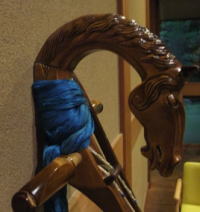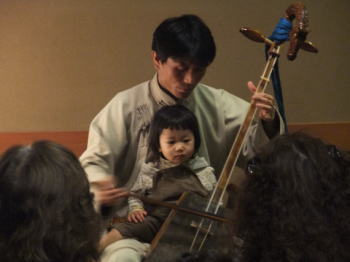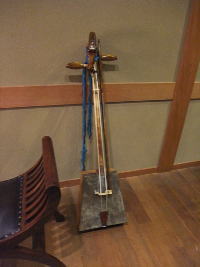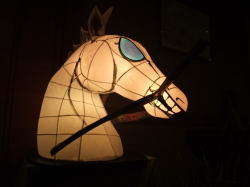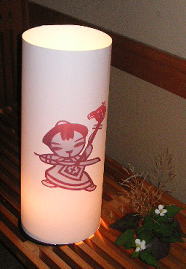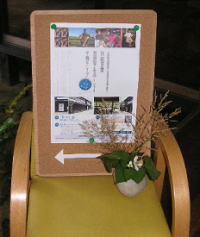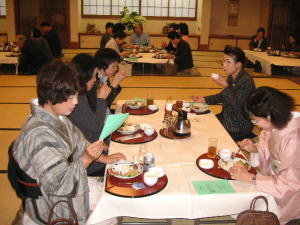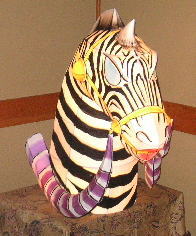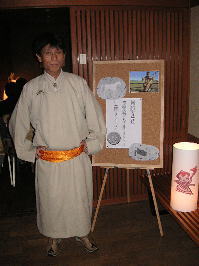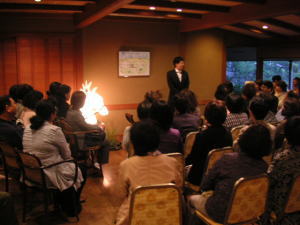|
|||||||||||||||||||
Morin khuur Concert |
|||||||||||||||||||
| What do people say in Mongolia when they greet each other? How do the winds smell out in the limitless prairies? How deep blue is the color of Mongolian sky? And what kind of sound do they hear in the winds? On May 29, there was a concert of Morin Khuur at Yoyokaku. We really enjoyed the performance of Mr. Tatsuya Okabayashi. Tatsuya's wife is expecting a second baby pretty soon, so Tatsuya brought his first daughter together with him. The girl Miharu, 2 years old, was the star of the day. She refused to leave her Dad's knees and stayed there during the whole concert, and when the audience clapped their hands, how her face shined proudly! Later, one of the guests said to me. Because of the girl's existence, the atmosphere changed. It was not like a precise Classic concert. It was a folk music, with children, adults, young and old, even with cows and horses. It was a warm, heart-healing music of the earth. It was so natural. The sound was like winds. So please see the photos of the day. |
|||||||||||||||||||
|
|||||||||||||||||||
Well, did you also hear the sound of morin khuur? Tatsuya's Хөөмий (Khöömii), the sound of the throat, which is two sounds at the same time, one is low base, and the other is like a whistle which is made with the mouth open. Strange music, it was! The audience were quite charmed. Just to make sure, I put the explanation of the instrument from wikipedia. Thank you for your joining the concert.See you next month. |
|||||||||||||||||||
|
|||||||||||||||||||
|
|
|||||||||||||||||||
|
|||||||||||||||||||
